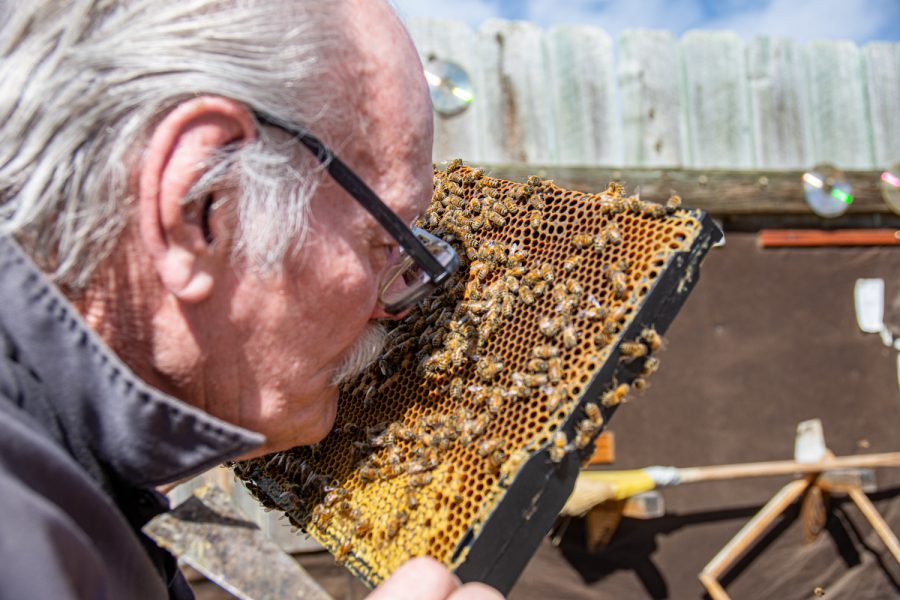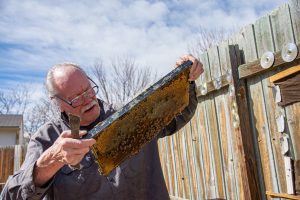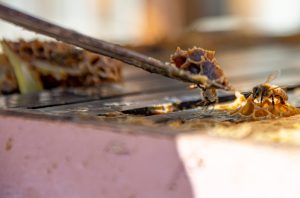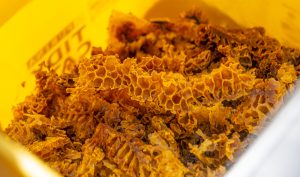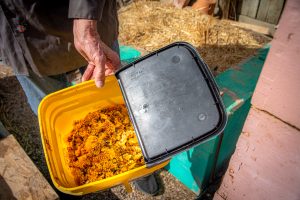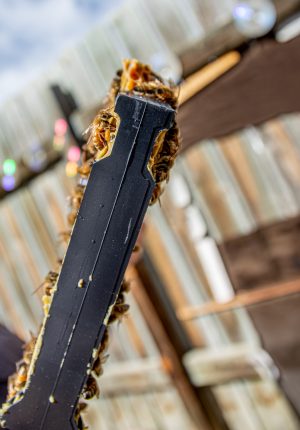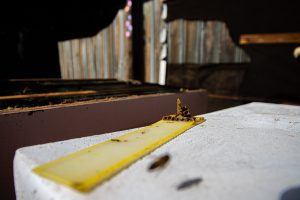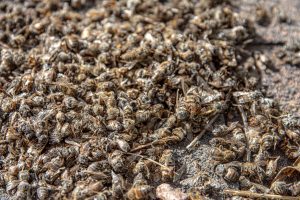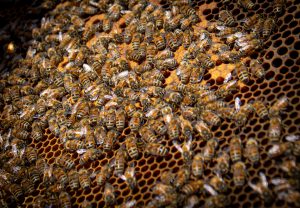Gallery: The father of colonies and his sweet empire
Collegian | Tri Duong
Dave Primer, board member of Northern Colorado Beekeepers Association, enjoys the smell of honey and pollen from the hive he beekeeps in his garden Oct. 1. “Over time the workers recognize you, and there is no need for protection. Even if you get stung by one, I just think of it was nature’s medicine freely given to us,” Primer said. “The poison is actually an elixir of life.”
Tri Duong, Photo Director
October 20, 2022
Over the past few years, the population of honeybees within the Northern Colorado region has suffered substantial losses due to various environmental changes. Our ecosystem has been out of equilibrium due to the continuation of chemical use along with increased frequency of weather crises. The Northern Colorado Beekeepers Association has been working to educate residents of Larimer County on how to advocate for change in order to keep our pollinator invertebrates healthy for the coming future. The process of pollination is a vital system that drives our food chain and maintenance of soil nutrition and aids other species’ interaction. There are countless honey farms around Northern Colorado, and it has been told to beekeepers that their prospects do not look bright for the colonies. However, beekeeper Dave Primer believes that this could be changed if you take on the perspective of being a protector of Mother Nature.
-
Dave Primer, board member of the Northern Colorado Beekeepers Association, opens the hive for a closer inspection before the temperature decreases further for the fall season in his garden Oct. 1. Primer started beekeeping in the desert of California and has been working for the last 30 years to care for honeybees. “Our food supply chain is heavily dependent on the work of these little guys,” Primer said. “If we want to eat, we have to first recognize the bigger role these workers play in our ecosystem.”
Collegian | Tri Duong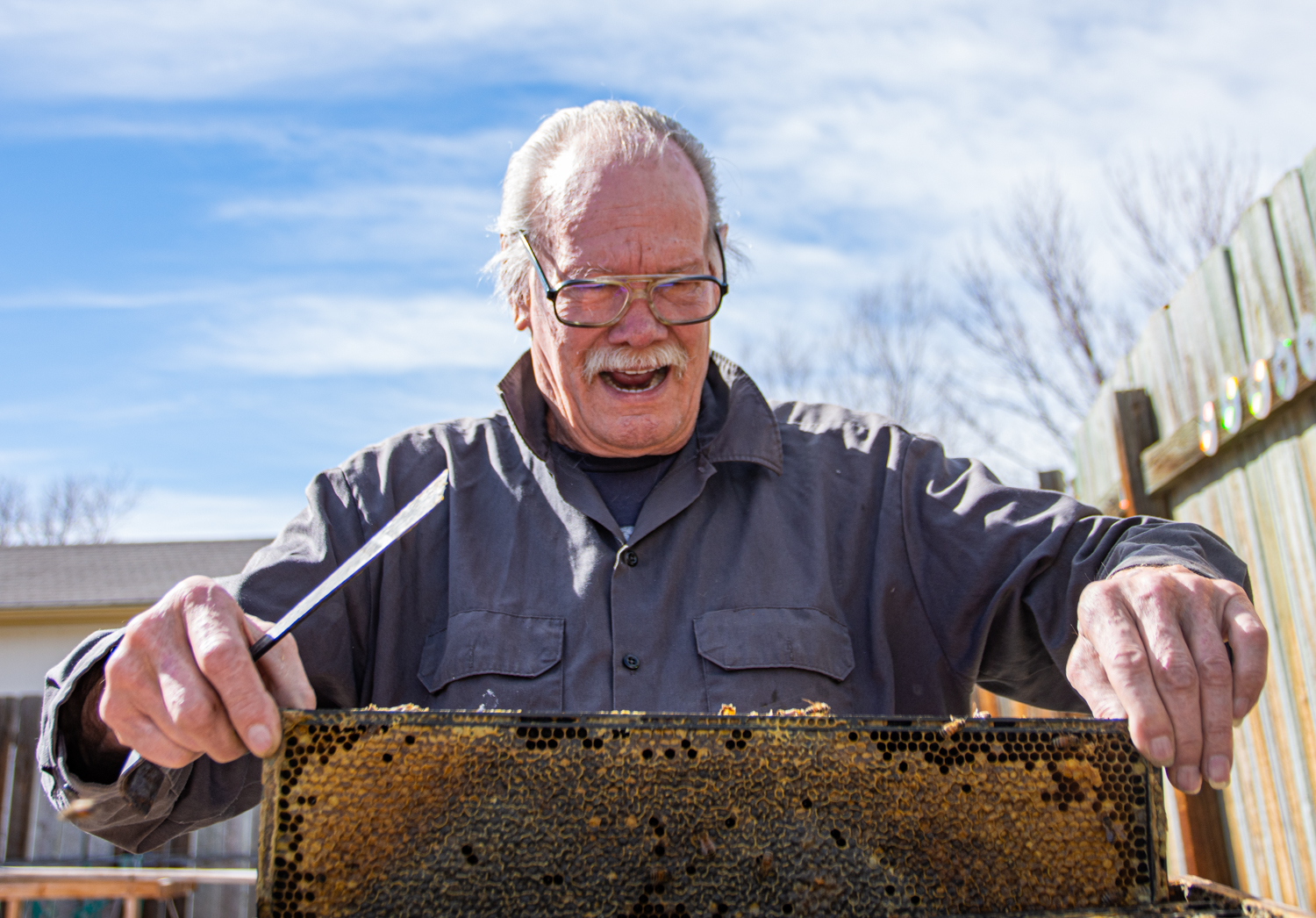
-
Dave Primer, board member of Northern Colorado Beekeepers Association, opens the hive for a closer inspection before the temperature decreases further for the fall season in his garden Oct. 1. “One of the biggest threat to honeybees nowadays are infections in the colony,” Primer said. “Varroa mites can introduce the hives to deformed wing virus.”
Collegian | Tri Duong
-
Dave Primer, board member of the Northern Colorado Beekeepers Association, opens the hive for a closer inspection before the temperature decreases further for the fall season in his garden Oct. 1.
Collegian | Tri Duong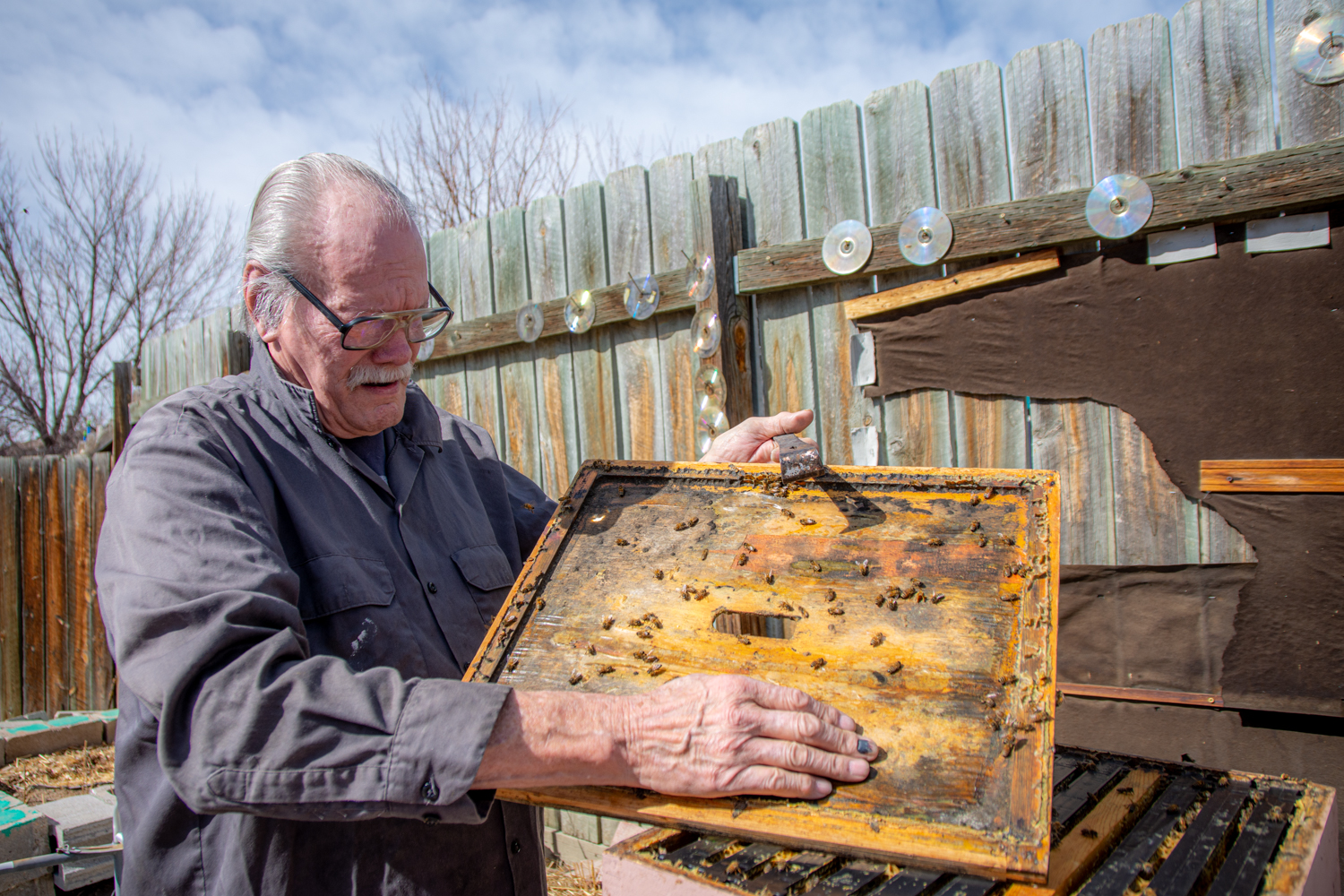
-
Dave Primer, board member of Northern Colorado Beekeepers Association, enjoys the smell of honey and pollen from the hive he beekeeps in his garden Oct. 1. “Over time the workers recognize you, and there is no need for protection. Even if you get stung by one, I just think of it was nature’s medicine freely given to us,” Primer said. “The poison is actually an elixir of life.”
Collegian | Tri Duong
-
Dave Primer, board member of the Northern Colorado Beekeepers Association, applies a mixture of terramycin with powdered sugar into the bee box to protect the workers from parasitic infections in his garden Oct. 1. “I apply this medicine one to three times during the year; you don’t want to overdo it, but it is important to have for colony health maintenance,” Primer said.
Collegian | Tri Duong
-
The queen and her workers in the hive of Northern Colorado Beekeepers Association board member Dave Primer’s garden Oct. 1. As a queen of the colony, she plays a critical role in the function and health of the hive’s livelihood; if she is gone, the colony would collapse.
Collegian | Tri Duong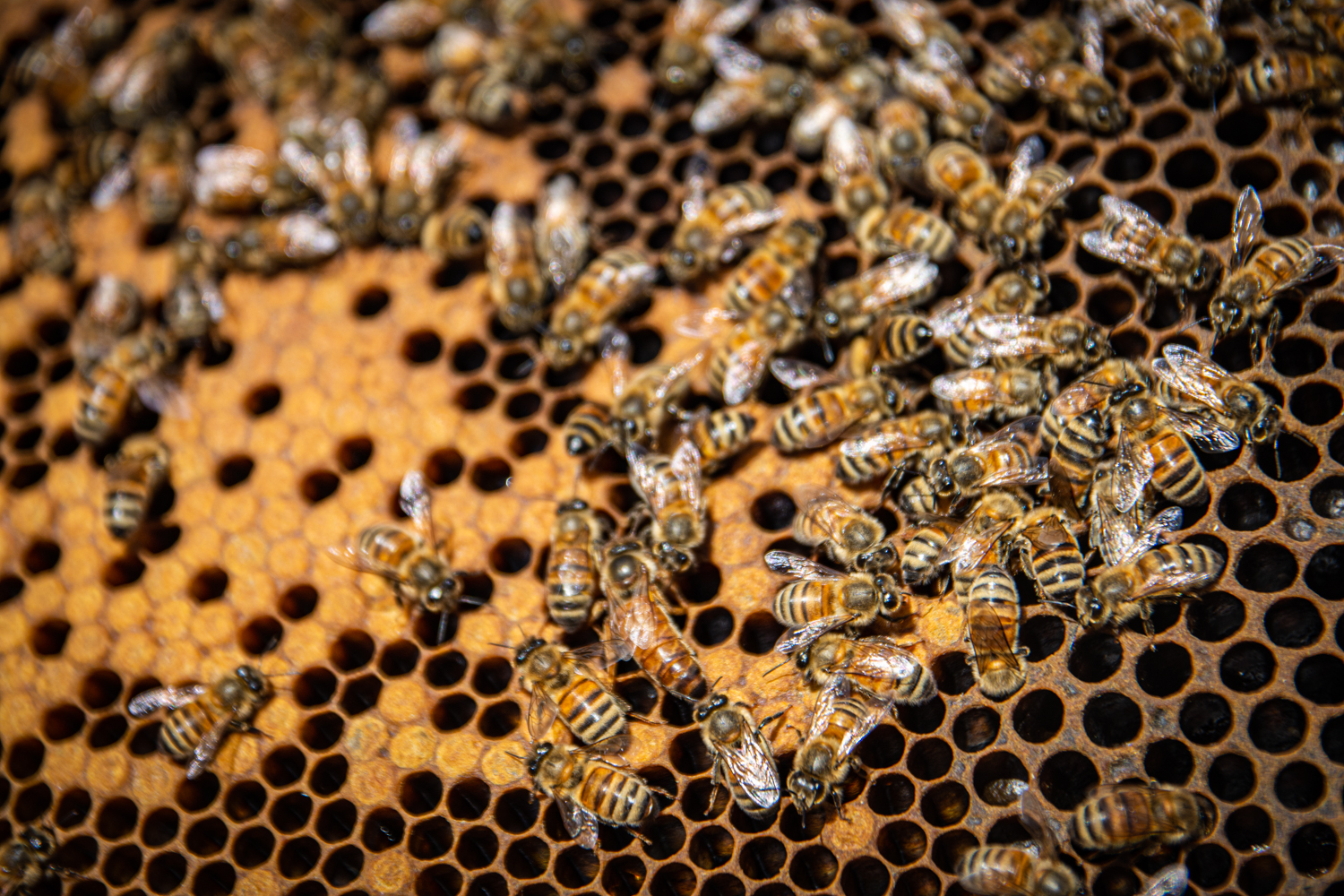
-
Dave Primer, board member of the Northern Colorado Beekeepers Association, scrapes wax from the bee box to clear space for the workers to secrete new wax in his garden Oct. 1. Raw wax is unfiltered and therefore contains remnants of wood splinters and pollen, making it hard for certain project use until it is purified.
Collegian | Tri Duong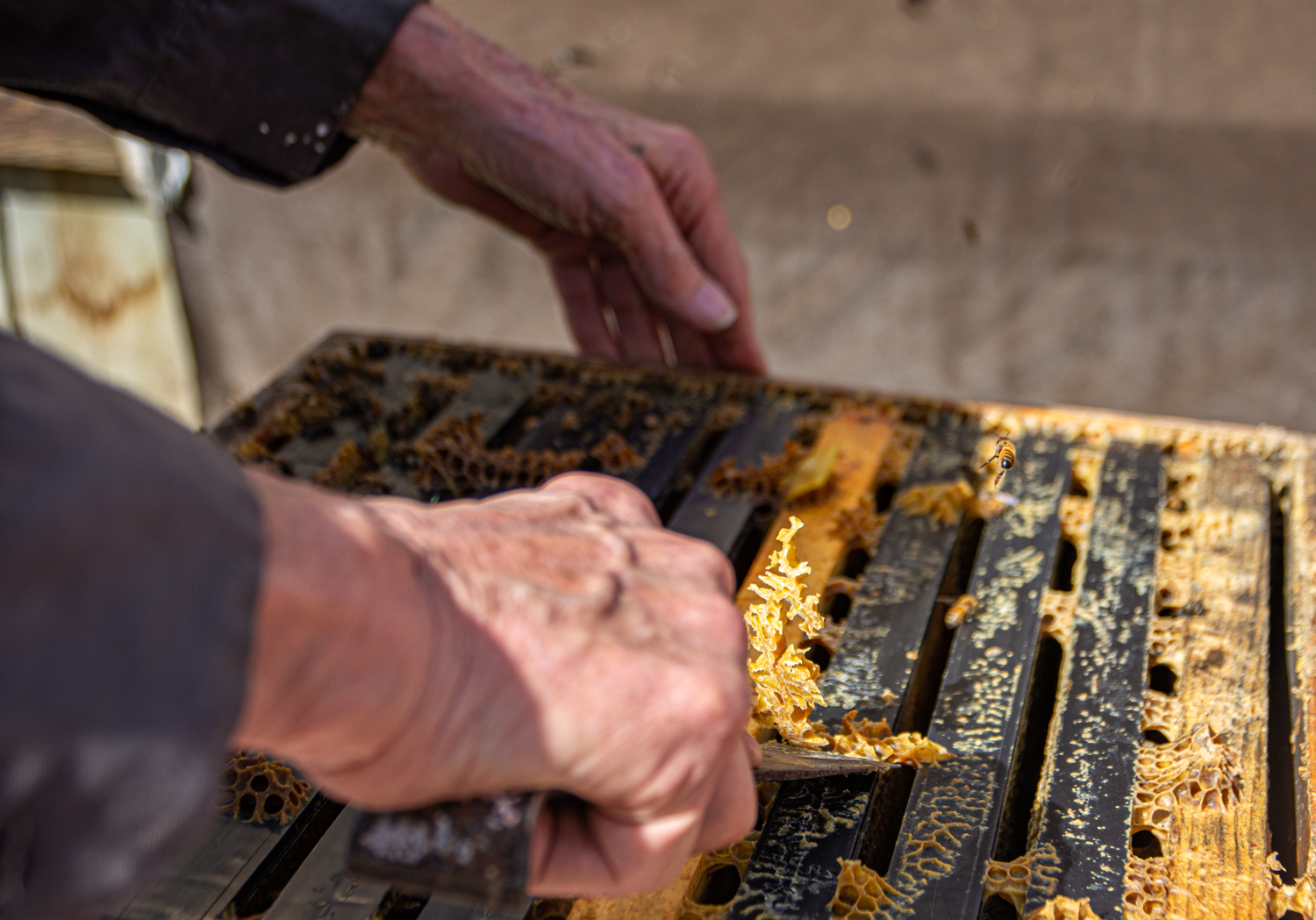
-
Dave Primer, board member of the Northern Colorado Beekeepers Association, scrapes wax from the bee box to clear space for the workers to secrete new wax in his garden Oct. 1. Raw wax is unfiltered and therefore contains remnants of wood splinters and pollen, making it hard for certain project use until it is purified.
Collegian | Tri Duong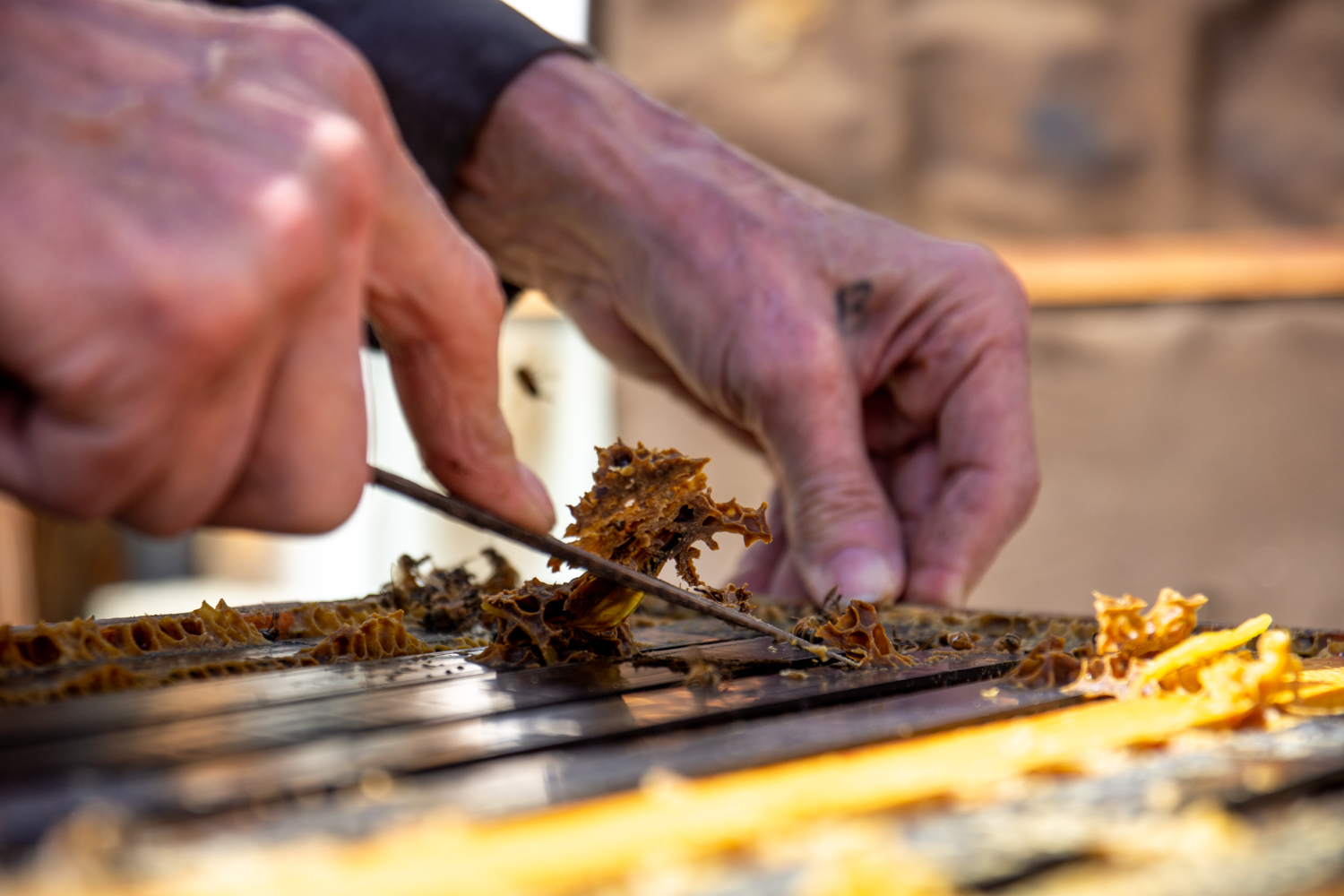
-
Dave Primer, board member of the Northern Colorado Beekeepers Association, scrapes wax from the bee box to clear space for the workers to secrete new wax in his garden Oct. 1. Raw wax is unfiltered and therefore contains remnants of wood splinters and pollen, making it hard for certain project use until it is purified.
Collegian | Tri Duong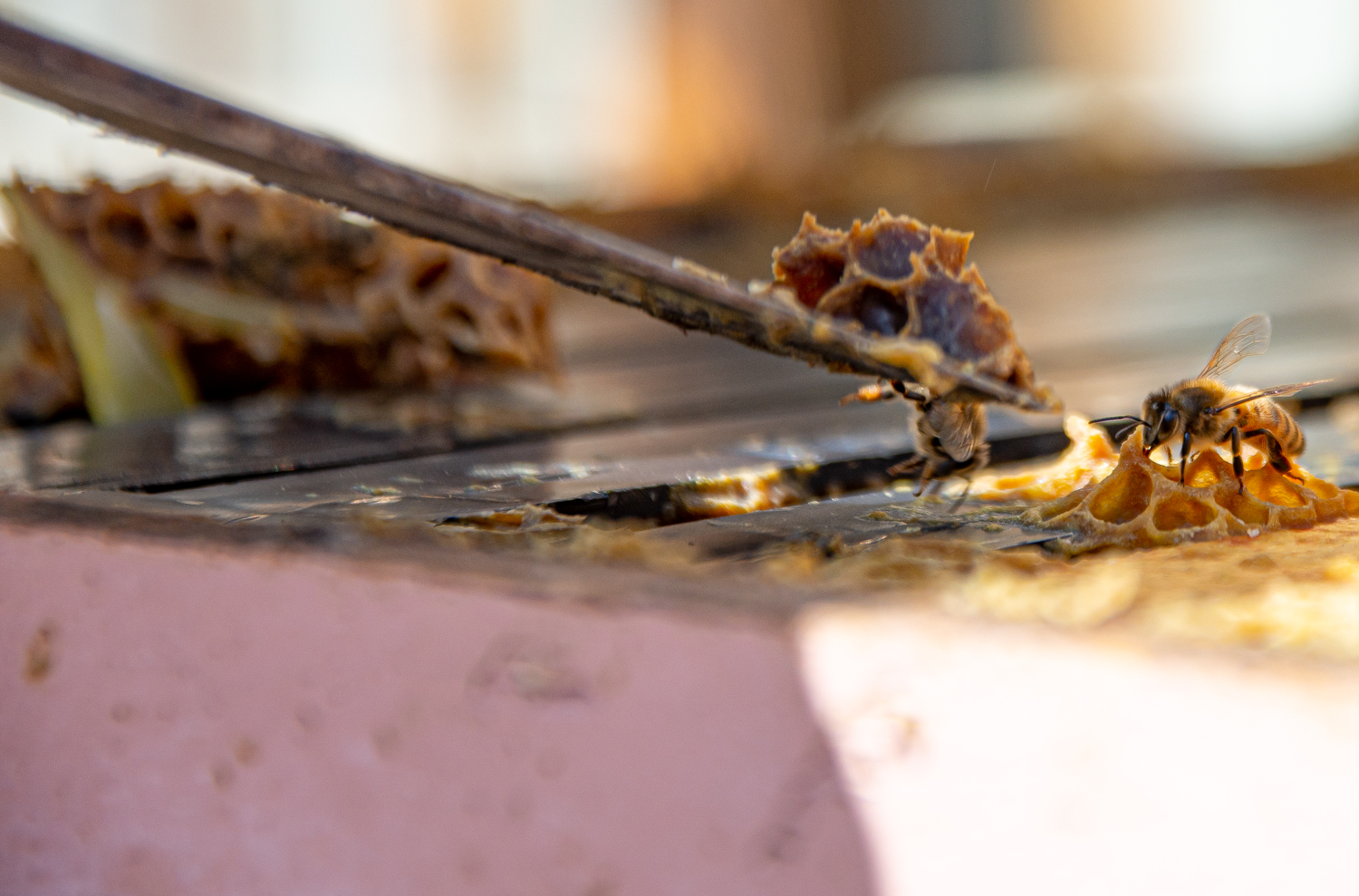
-
Collection of wax over the period of a month from the hive in Dave Primer’s garden Oct. 1. “With this amount of wax, I could make candles, lip balm or waterproof your shoes,” said Dave Primer, board member of the Northern Colorado Beekeepers Association.
Collegian | Tri Duong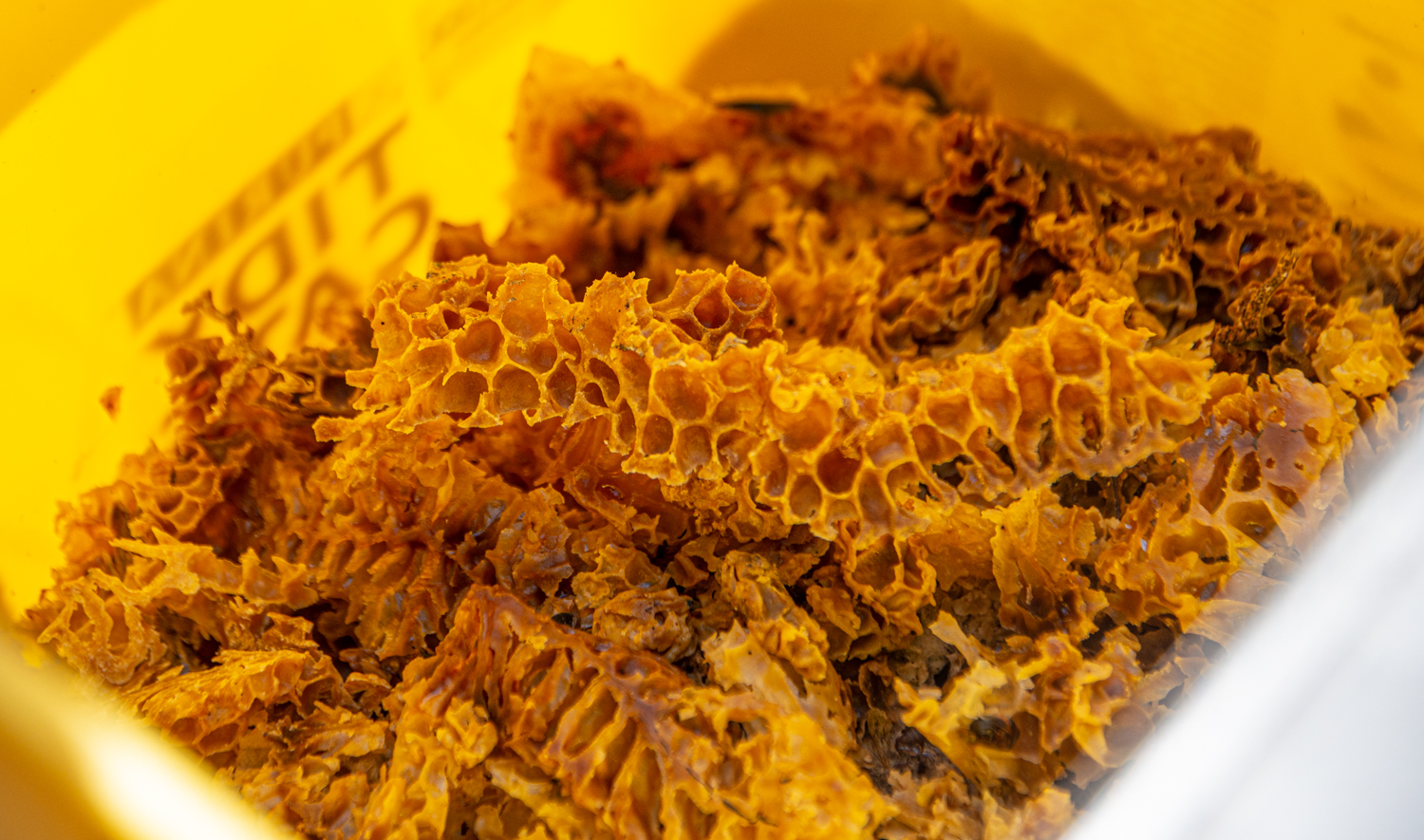
-
Collection of wax over the period of a month from the hive in Northern Colorado Beekeepers Association board member Dave Primer’s garden Oct. 1. “With this amount of wax, I could make candles, lip balm or waterproof your shoes,” Primer said.
Collegian | Tri Duong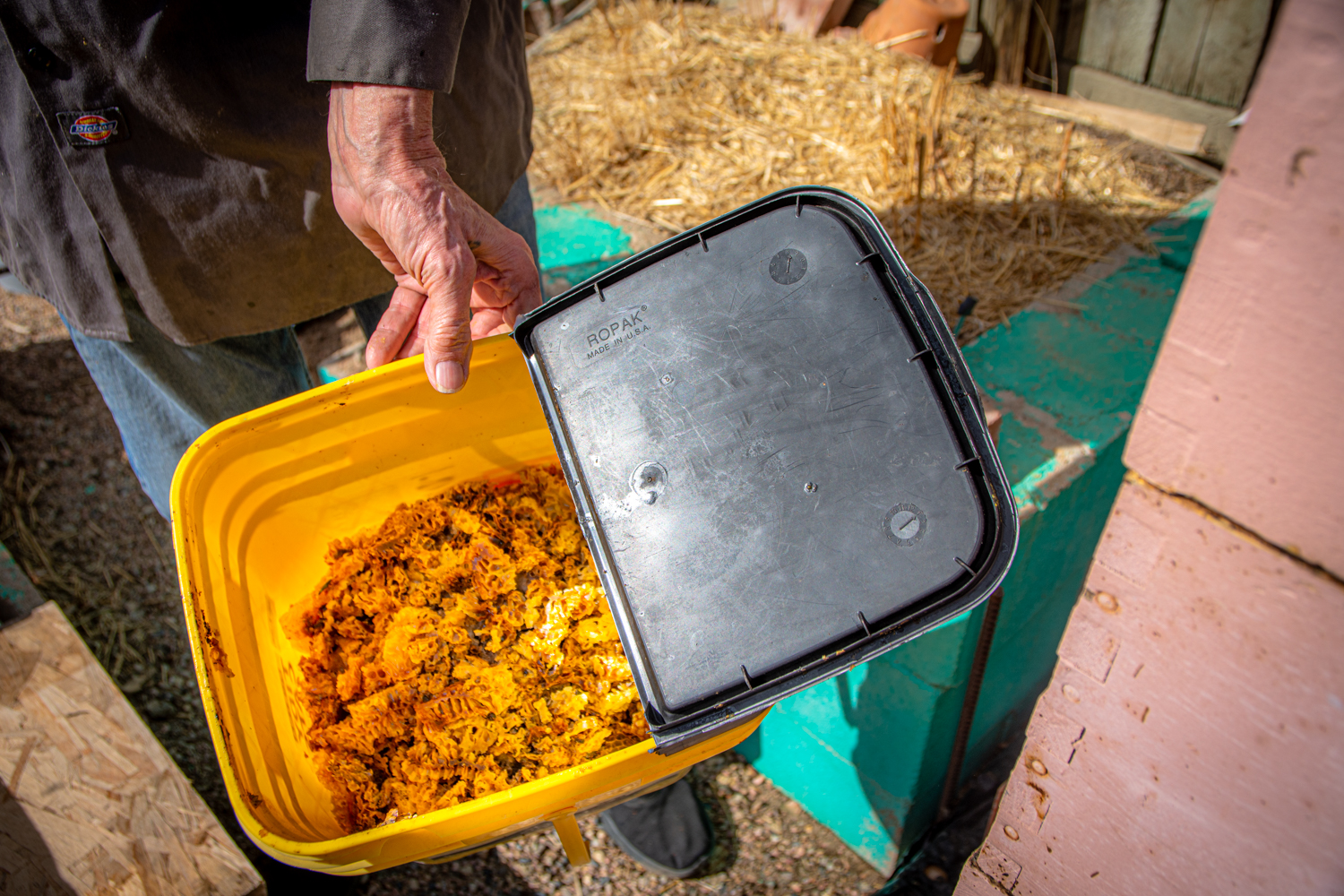
-
The worker bees on a bracket from the hive of Northern Colorado Beekeepers Association board member Dave Primer’s garden Oct. 1. They need a variety of flowers like lavender, rosemary and sunflower to keep the immunity level of the hive up. If the colony has limited access to a multitude of plants, then they are more susceptible to having poor nutrition.
Collegian | Tri Duong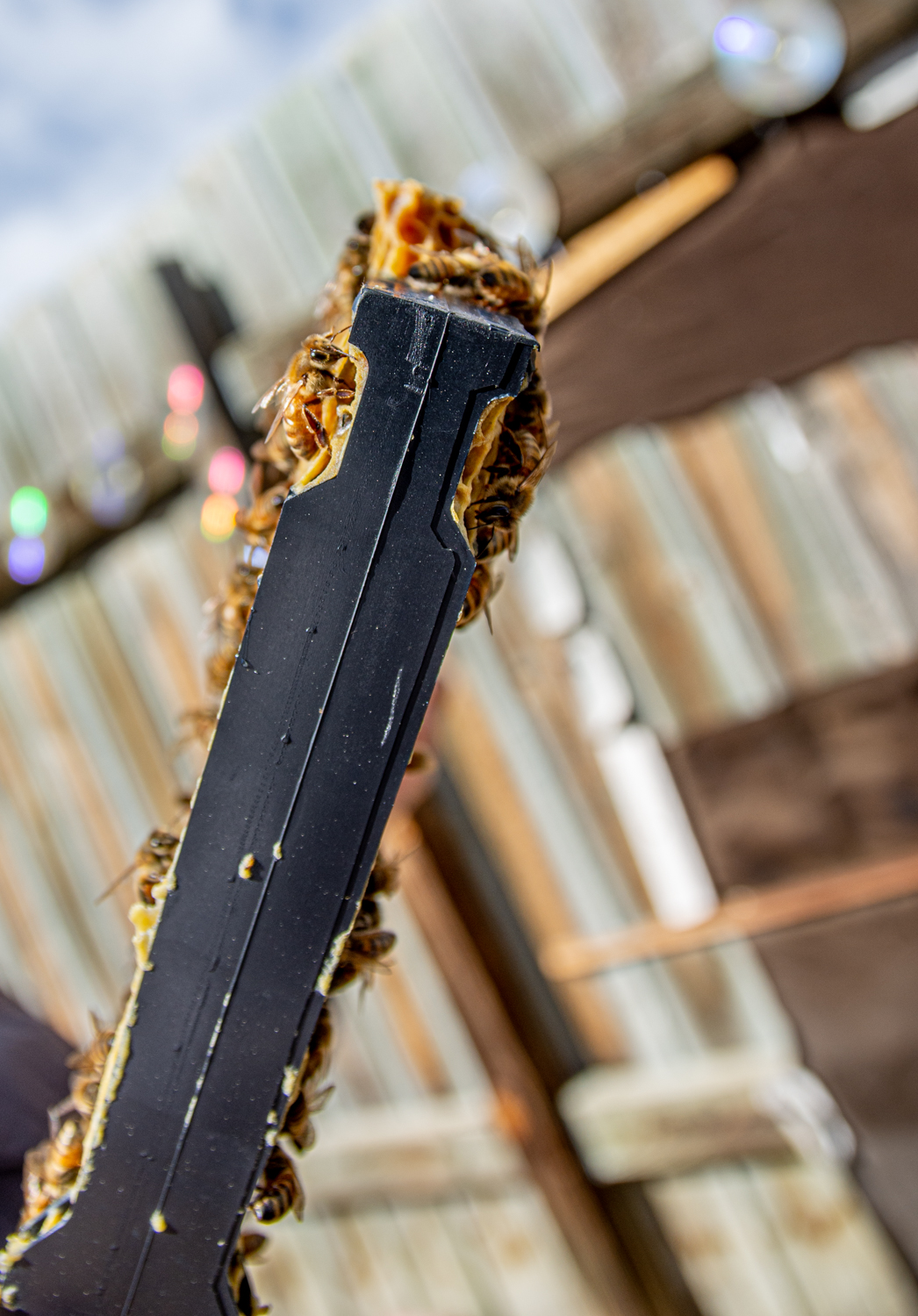
-
The worker bees in the hive of Northern Colorado Beekeepers Association board member Dave Primer’s garden Oct. 1. They need a variety of flowers like lavender, rosemary and sunflowers to keep the immunity level of the hive up. If the colony has limited access to a multitude of plants, then they are more susceptible to having poor nutrition.
Collegian | Tri Duong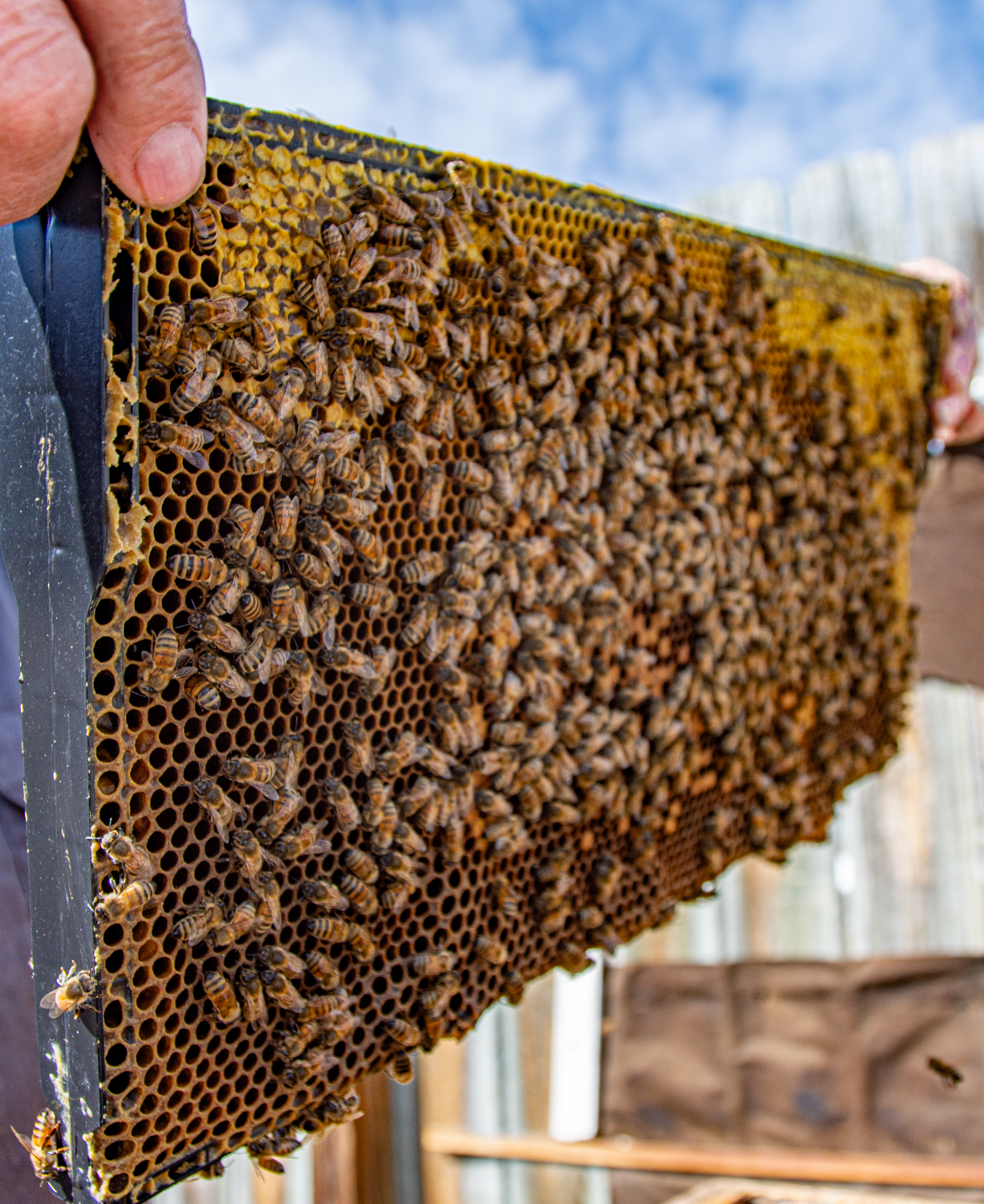
-
An apivar strip ready for use to protect the honeybee colony in the garden of Dave Primer, a board member of the Northern Colorado Beekeepers Association Oct. 1. The purpose of the medicine, applied for 30 to 50 days, is to kill varroa mites, and it can be used once for all of winter. “In order to use this treatment, I have to get an authorization from the veterinarian because this type of stuff is very potent,” Primer said.
Collegian | Tri Duong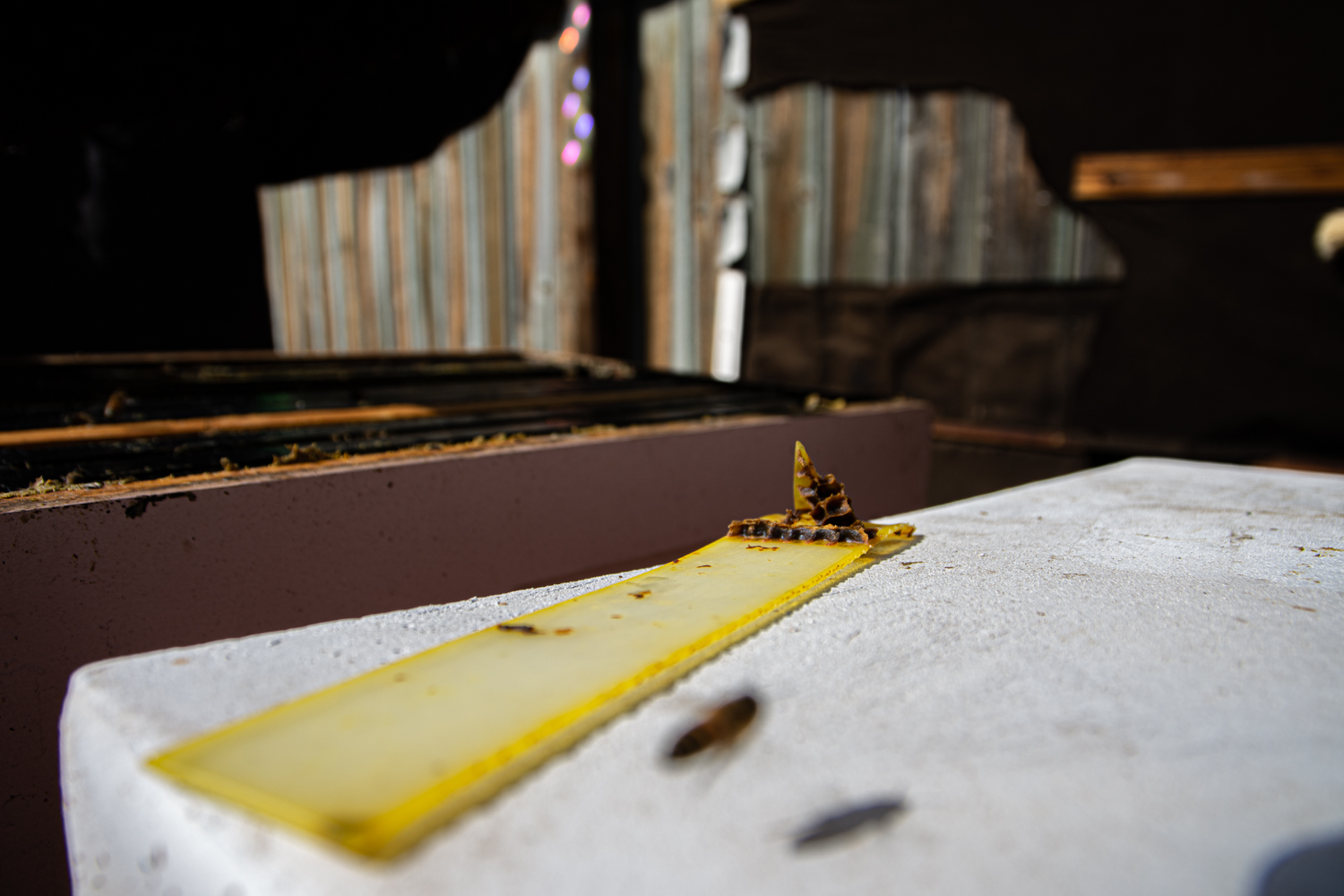
-
An apivar strip hangs loose on a bracket from the hive in the garden of Dave Primer, a board member of the Northern Colorado Beekeepers Association Oct. 1. The purpose of the medicine, applied for 30 to 50 days, is to kill varroa mites, and it can be used once for all of winter. “In order to use this treatment, I have to get an authorization from the veterinarian because this type of stuff is very potent,” Primer said.
Collegian | Tri Duong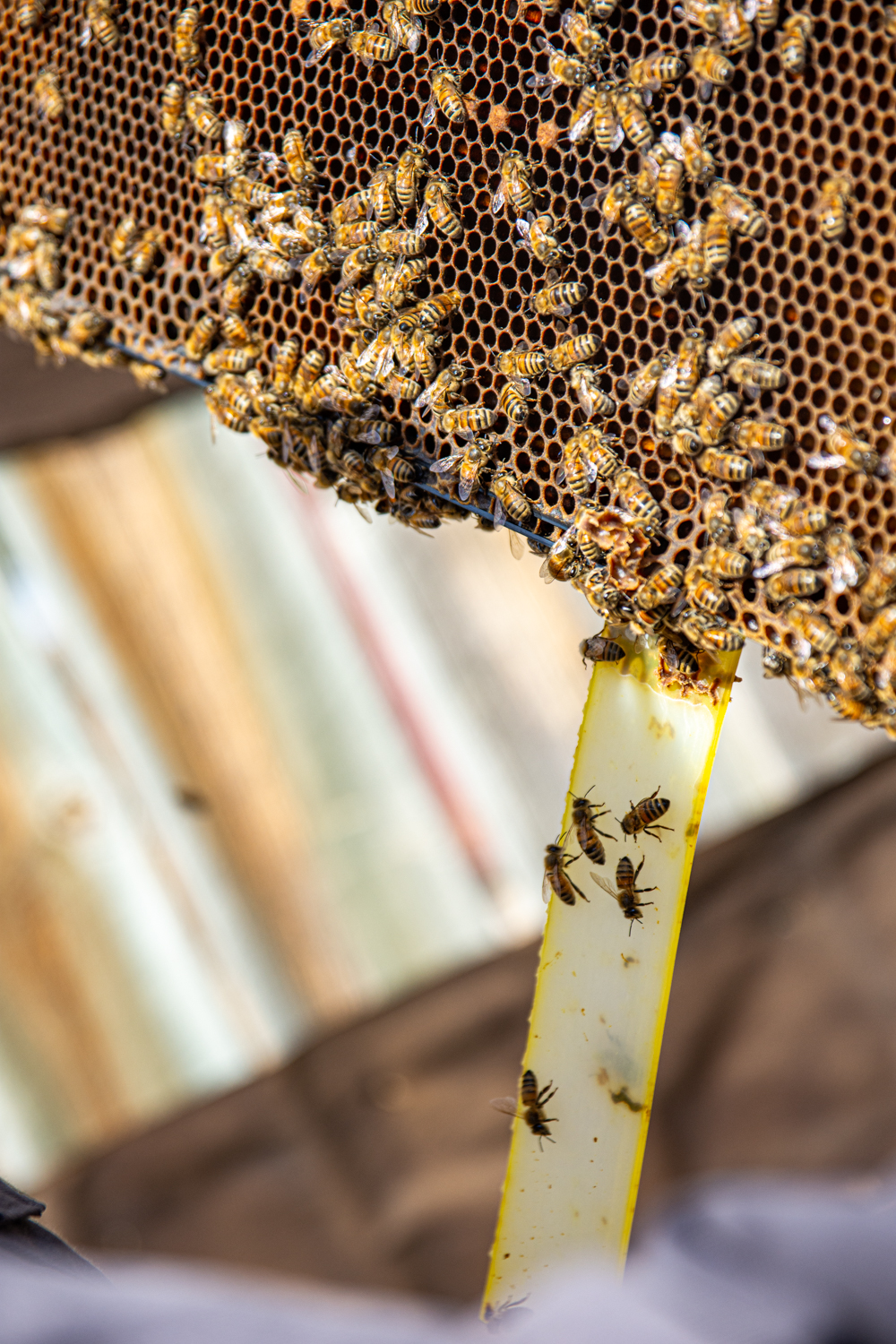
-
Dead honeybees on the ground in Dave Primer’s garden Oct. 1. According to the nationwide survey conducted by the nonprofit Bee Informed Partnership, beekeepers across the United States lost 39% of their managed honeybee colonies from April 2021 to April 2022.
Collegian | Tri Duong
-
The worker bees in the hive of Northern Colorado Beekeepers Association board member Dave Primer’s garden Oct. 1. They need a variety of flowers like lavender, rosemary and sunflowers to keep the immunity level of the hive up. If the colony has limited access to a multitude of plants, they are more susceptible to having poor nutrition.
Collegian | Tri Duong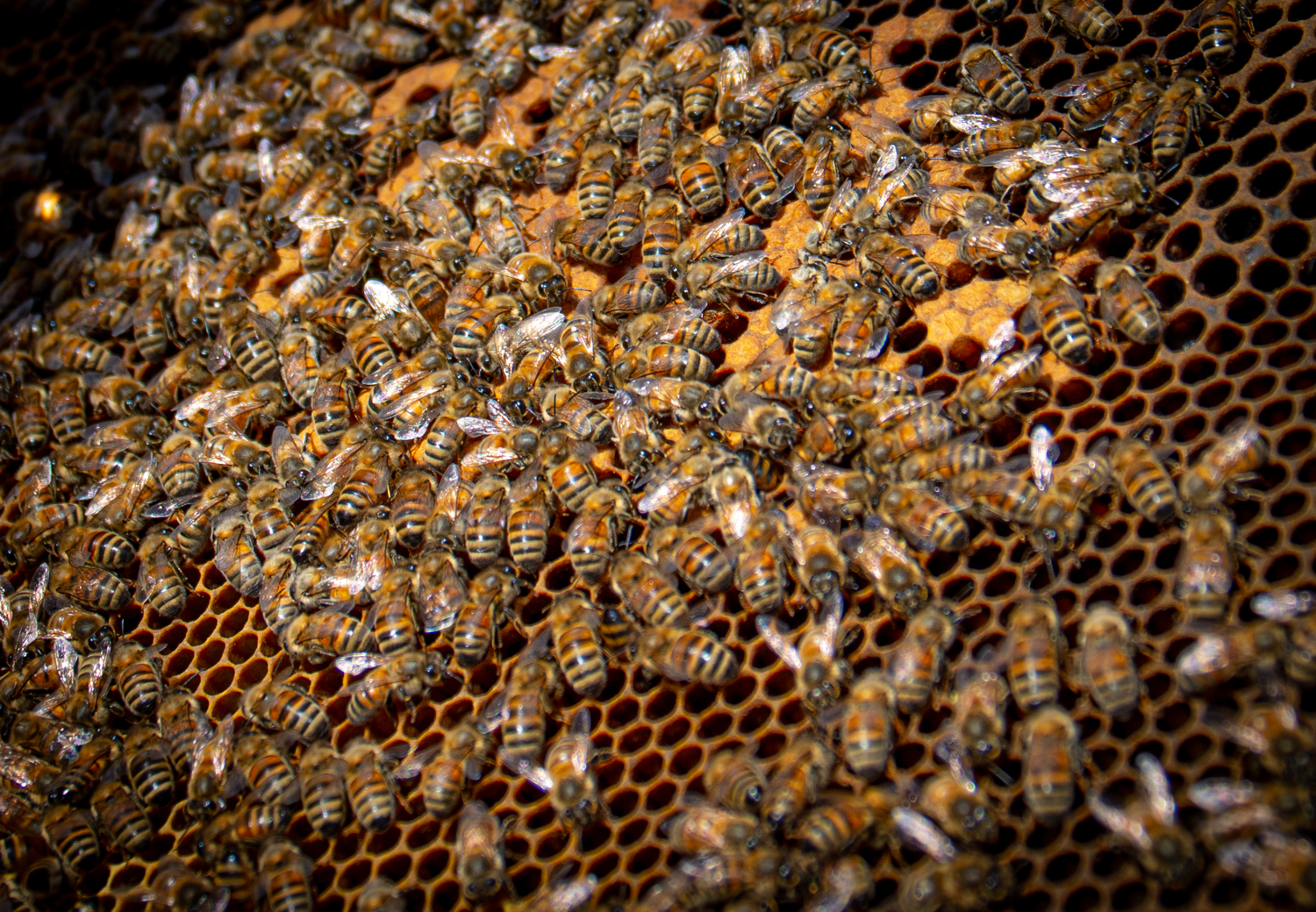
Reach Tri Duong at photo@collegian.com or on Twitter @TheRoamingLight.


